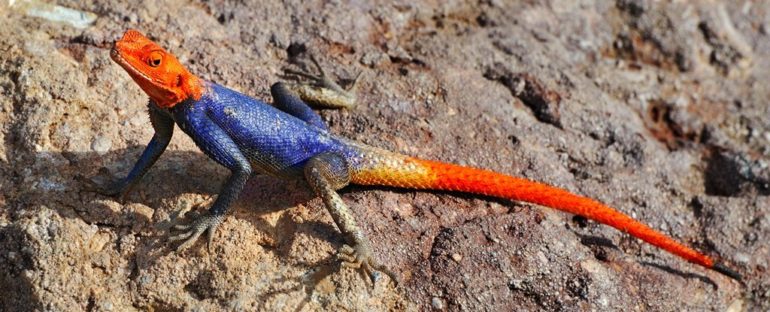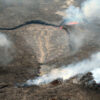Fitness, the way the naturalist Charles Darwin conceptualised it, refers to the ability of organisms to survive and reproduce successfully.
Reproductive success lies in species’ ability to have offspring that are also capable of surviving and reproducing, as are their offspring and so on down the line of descent.
Species optimise their Darwinian fitness – and their long-term survival – differently. Both adults and offspring experience challenges to their survival in the environments where they occur, and species have evolved strategies to deal with these environmental pressures.
These evolutionary processes are driven by natural selection, which favours the individuals best equipped to survive and reproduce. Their numbers in the population increase with generations. The numbers of poorly equipped individuals decrease with generations.
One environmental pressure experienced by species, in general, is predation. By eliminating the less fit individuals over time, predation can drive the population to increasing fitness in terms of survival and reproductive success.
This is what seems to be the case in two species of reptile we studied for several years in Namibia. The two species of southern African agamids (a family of lizards) have widely differing survival and reproductive strategies. The reason may lie with their predators.
Different adaptations
The first species, Agama planiceps, the larger of the two, is highly visible because of its colourful body. It lives in groups on rocky outcrops in savanna areas. Males aggressively defend territories during the reproductive season.
During this time, their head, throat, and tail are bright orange-red, and their body and legs shiny deep purple. Females do not undergo any changes to their normal yellow-spotted head and black body colouration.
Each male defends a territory with at least two adult females along with several subadult males and females.
Agama aculeata, on the other hand, is a solitary, well-camouflaged species because of its body colour. It lives in flat, sandy savanna areas. Its males also defend territories, though less aggressively than planiceps males do.
Males and females form monogamous breeding pairs. The head and throat of males turn deep blue, while females develop light blue head colouration and brown blotches on their trunk when carrying eggs.
Although many aspects of their biology are similar, the two agamid species have very different social behaviour and reproductive characteristics. We believe these differences most likely evolved in response to the differing levels of predation the species experienced.
Based on their differences in body colour, it can be deduced that they are not equally detectable to predators that hunt by sight and should therefore differ with respect to the predation pressure they experience from them.
In the area where the study was conducted, the yellow mongoose and rock kestrel were two such predators which hunted both species.
In lizards, damaged tails are a sign of predation – but also a successful escape. The percentage of damaged tails in the highly visible Agama planiceps was double that in the less visible Agama aculeata. This, in our view, indicates higher predation pressure in Agama planiceps.
The planiceps females are larger than their aculeata counterparts. But they carry on average only half the number of eggs. The total mass of its egg clutch as a percentage of its body mass was also about half the aculeata’s. The eggs of planiceps are larger than aculeata’s; so are the newly hatched young.
So, what adaptive advantages do these differences give the two species in terms of coping with predation pressure and maximising their survival and reproductive success?
What it all means
In the case of the colourful planiceps, being social should give it the advantage of group vigilance and timely detection of predators. The camouflage and solitary behaviour of aculeata, meanwhile, should mean it’s harder for predators to detect.
The larger size of planiceps males, females, and hatchlings may also afford them greater running speed for escaping predatory attacks.
It is likely that planiceps maximises the survival prospects of male genes through their distribution among the eggs of several females. Females, in turn, should benefit from having offspring that carry the genes of strong and healthy males as well as living in well-resourced territories in terms of food (mainly insects) and shelter.
Monogamy in the solitary aculeata, on the other hand, should reduce detection by predators as the species moves less. This would maximise their survival. And the large number of offspring they produce should maximise their reproductive success.
The lighter egg clutch carried by a planiceps female may ensure that she can still run fast enough to escape predatory attacks. Bigger hatchlings may also be able to run faster to escape predators.
The hatchlings remain in groups, which may give them the advantage of confusing predators by scattering in all directions during an attack.
Given the assumption that camouflage and solitary behaviour protect aculeata against predators rather than running speed, it is not surprising that females of this species, on average, carry a much heavier load of eggs than planiceps females.
They are often so weighed down by their eggs that they are barely able to run. Their smaller and camouflaged hatchlings are also solitary and extremely hard to spot, even to the trained eye.
They generally remain stationary and dash for cover only when approached too closely, which should serve them well in dealing with predators.
Given these findings regarding their social behaviour and reproductive characteristics, and the difference in damaged tails found between them, there’s a strong case that predation is what has shaped their strategies for survival and reproductive success.
Neil Heideman, Professor in Zoology, University of the Free State.
This article is republished from The Conversation under a Creative Commons license. Read the original article.



